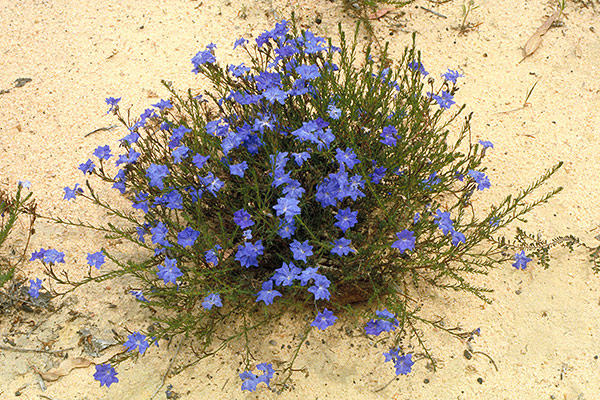General Description:
Lechenaultia is a genus of about 30 species of small, shrubby or herbaceous plants. Most are found in Western Australia. Lechenaultia biloba, the blue lechenaultia, is the best known member of the genus and is commonly cultivated in many areas of Australia.
Lechenaultia biloba is a very popular and spectacular small shrub with intense blue flowers (in its common form). In suitable climates it is an ideal rockery plant, tolerating exposed, hot, sunny positions despite its delicate appearance. It is fairly short lived – about 4 to 6 years in ideal conditions would be about average – but it is easily propagated.
The species is usually 300mm or less in height by a similar width. The branches are twiggy with linear, narrow leaves to around 10 mm.
Flowers of L.biloba are five-petalled and at about 20-30mm diameter are quite large given the small size of the plant. Generally the flower colour is a vivid blue but pale forms are known as are pure white forms. A cultivar known as “White Flash” has blue flowers with white streaks.
As a native of south Western Australia, L.biloba prefers climates with dry summers. It can be grown in sub-tropical areas but is probably best grown in a container in those areas.
Propagation of L.biloba is difficult from seed but cuttings strike very easily. This means that the keen plant propagator can ensure that replacement plants are always available when older ones die.
Note: The spelling of Lechenaultia without an “s” (as might be expected from the name “Leschenault”) is a result of an error when the genus was first described.

Lechenaultia biloba
Photo: Brian Walters
 Australian Native Plants Society (Australia)
Australian Native Plants Society (Australia)